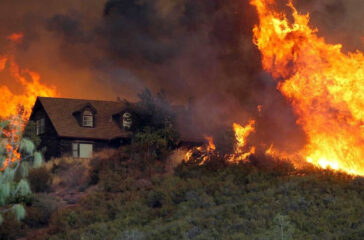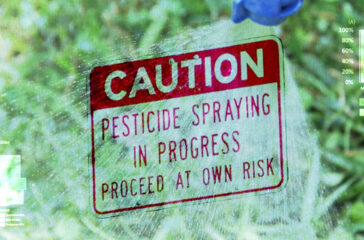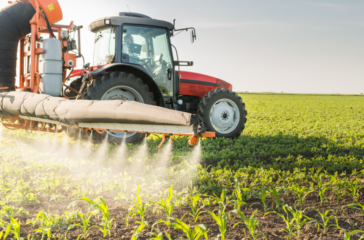Postcard from California: Close California’s last nuclear power plant
The last nuclear power plant in California, vulnerable to earthquakes and priced out of the energy market by cheaper renewables, is slated to close in three years.

The last nuclear power plant in California, vulnerable to earthquakes and priced out of the energy market by cheaper renewables, is slated to close in three years.

Homeowners and home builders in California and other US states at risk from wildfires must work harder to create “fire-resistant” homes as wildfire seasons grow in length, frequency, and severity, according to a new report.
Drier and hotter conditions associated with climate change, along with poor forestry management practices and other factors, are allowing for a denser, more fire-prone landscape even as residential and commercial development continues to encroach on wilderness spaces. It all exacerbates the risks and costs caused by raging wildfires, such as the cluster burning this week through Trinity County, California.
Preparing for and mitigating the costly consequences of wildfires requires an approach that centers home ignition as the main problem, and not the wildfire itself, stated a recent report by Headwaters Economics and the Insurance Institute for Business and Home Safety.
“Increasing home loss and growing risks require reevaluating the wildfire crisis as a home-ignition problem and not a wildland fire problem,” the report states. “A home’s building materials, design, and nearby landscaping influence its survival. Together with the location, arrangement, and placement of nearby homes, constructing a wildfire-resistant home is critical in light of increasing wildfire risks.”

In September 2020, California Gov. Gavin Newsom stood amid the devastation of a wildfire that ultimately burned more than 300,000 acres, incinerated entire towns, and killed 16 people. His voice hoarse in a ghastly gray air, the governor spoke angrily.

Building on years of research that shows links between agricultural chemicals and cancer, researchers say they have found fresh evidence tying certain pesticides to cancers in children and adults in 11 western U.S. states.
Analyzing federal pesticide data and state health registries, the research team reported a close association between the use of pesticides called fumigants and the development of cancers in people living in the states analyzed.
The study, published last month in the journal GeoHealth, is the first to analyze the geospatial distribution of cancer incidence with pesticide use in the Western United States. The authors are three researchers from the Idaho Water Resources Research Institute at the University of Idaho and three researchers from Northern Arizona University.

Bertha Magana has lived in the same house in rural Monterey County, California since 1987; it’s where she and her husband raised their four children, and the place they enjoy visits from their 11 grandchildren. Recently, however, 61-year-old Magana learned that the well from which the family gets its drinking water is contaminated with an industrial compound known to cause cancer. Her family is healthy, but Magana is now plagued with the constant worry that comes with knowing her water is unsafe.
“I am very worried,” Magana said in a recent interview, translated from Spanish by an interpreter.


Florida Gov. Ron DeSantis’s decision Wednesday to veto a controversial rooftop solar proposal is the latest round in a coast-to-coast battle over measures that utilities say are needed to ensure equitable and affordable energy solutions but which opponents say would ratchet back consumer incentives for adoption of rooftop solar.
The Florida bill would have phased out credits for new rooftop solar customers, erasing the credits entirely by 2029. Similar measures are being fought over in several states where solar energy is seen as a key to helping wean the nation off a dependence on fossil fuels.

The California Office of Environmental Health Hazard Assessment (OEHHA) is proposing changes to its messaging to consumers regarding the cancer risk associated with products made with the weed killing chemical glyphosate.
The language shift is subtle, but is significant for multiple reasons, including the potential for it to impact Monsanto’s efforts to appeal trial losses to the U.S. Supreme Court.